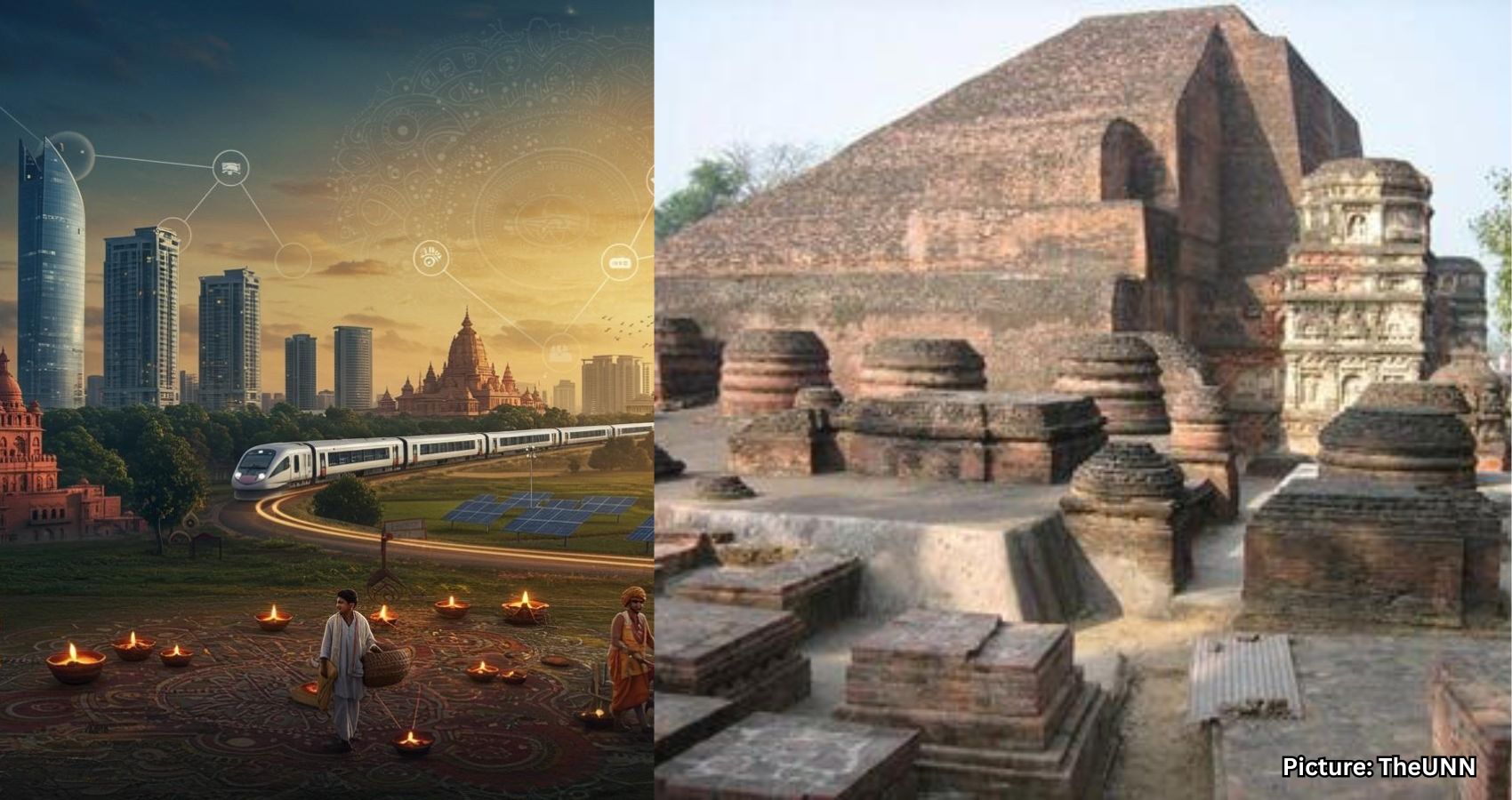A quiet resurgence in Bihar is reshaping perceptions of the state, highlighting its potential for growth and innovation through education and community resilience.
When people think of Bihar, they often recall its colonial past, political dysfunction, and decades of neglect. For years, the state was viewed as a symbol of what went wrong in India’s development narrative. However, a recent visit revealed a different story: a quiet, determined resurgence that could redefine India’s future.
My journey began in Bodh Gaya, a place synonymous with peace and reflection, where the Buddha attained enlightenment. On my way to Nalanda, I stumbled upon a remarkable testament to human endurance—the ridge carved by Dashrath Manjhi, known as the “mountain man.” Standing there, surrounded by sheer rock walls, I felt as though I was traversing a path forged from loss and love.
Manjhi’s wife, Falguni Devi, suffered a severe injury after falling along the rocky hillside, and the nearest hospital was located on the other side of the mountain. Tragically, by the time she could be transported, it was too late. Grief-stricken, Manjhi resolved that no one else should face such a fate due to geographical barriers. Armed only with a hammer and chisel, he dedicated 22 years to carving a passage through solid rock, connecting his village to the world beyond.
Today, that narrow road serves as a lifeline, transporting children to school and workers to nearby towns. Yet, what struck me most was not just the road itself, but the indomitable spirit that created it. Manjhi had no wealth, no formal education, and no institutional support—only a profound sense of purpose. His story resonated with my own journey of turning grief into determination, which led to the founding of Vionix Biosciences, an endeavor aimed at using science to alleviate suffering.
A few kilometers away lies Patwa Toli, a village that has transformed its identity. Once known for its weavers, generations of artisans faced hardship as the textile trade dwindled. Today, however, Patwa Toli is celebrated for producing engineers. Nearly every household boasts a member who has successfully passed the IIT entrance exam, and the literacy rate stands at an impressive 98%. Families that once struggled to make ends meet are now sending their children to some of India’s top universities.
As I wandered through the village, I was greeted by the rhythmic clatter of looms intermingling with the scratch of pencils. The same hands that once wove fabric now solve complex equations. The walls of homes are adorned with educational charts and formulas, and in the evenings, dim bulbs illuminate the faces of students studying late into the night. While they refer to Patwa Toli as “the IIT factory,” this label fails to capture the essence of what is happening here. It is a renaissance—a collective uprising against adversity.
At the heart of this movement is Vriksha Sansthan, a free mentoring center established by Chandrakant Pateshwari and Jitendra Kumar, a former IITian from the village. During my visit, I met students—the children of loom workers, mechanics, and shopkeepers—who are studying tirelessly, driven by dreams that extend beyond their immediate surroundings. The mentors, once village children themselves, volunteer their time after regular jobs to help these students unlock their potential. They emphasize that brilliance is cultivated through perseverance, not determined by one’s background, and that their aspirations are within reach.
I encouraged the students to understand that gaining admission to IIT is not the only path to success. Their grit and work ethic are invaluable assets—qualities that have fueled the growth of Silicon Valley. With the right exposure, they could emerge as innovators who create jobs rather than merely seek them. One of my technical advisors, machine learning expert Jagadish Venkataraman, is set to collaborate with them virtually, bringing the principles of Artificial Intelligence to life as a practical tool for their learning.
As I departed the village, the sun set behind the looms, their rhythmic hum fading into the evening air. The road ahead wound through fields and small towns, leading me toward Nalanda, the next chapter in Bihar’s evolving narrative. If Patwa Toli symbolizes education as liberation, Nalanda represents education as enlightenment—a bridge connecting material success with moral wisdom.
At Nalanda University, the new campus stands proudly alongside the ruins of the ancient institution, which once attracted scholars from across Asia long before the founding of Oxford and Cambridge. The original Nalanda was a beacon of reason, inquiry, and universal learning. Witnessing the new university rise from those same fields felt like observing history turn a significant corner.
What impressed me most was not the grandeur of the buildings, but the clarity of vision among the faculty. They spoke passionately about integrating science, sustainability, and ethics—reviving the spirit of Nalanda, where education was intended to uplift humanity. The campus maintains strict environmental values; for instance, non-electric vehicles require special permits to enter. This small but telling symbol of integrity brought a smile to my face.
As I walked through the courtyards of the ancient Nalanda, I reflected on Manjhi’s ridge, the village of dreamers, and this reborn university. They are all interconnected, part of a continuum of resilience and aspiration. One man broke a mountain with sheer determination. One village shattered the cycle of poverty through education. And one university is striving to dismantle the complacency that has hindered a nation capable of achieving so much more.
Source: Original article

